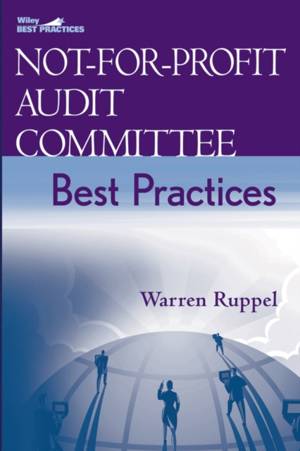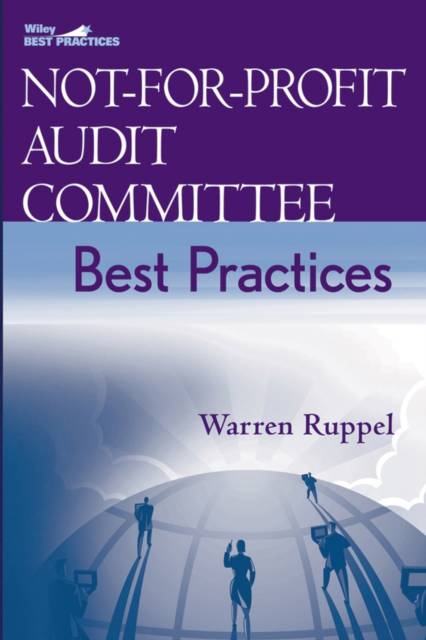
- Afhalen na 1 uur in een winkel met voorraad
- Gratis thuislevering in België vanaf € 30
- Ruim aanbod met 7 miljoen producten
- Afhalen na 1 uur in een winkel met voorraad
- Gratis thuislevering in België vanaf € 30
- Ruim aanbod met 7 miljoen producten
Zoeken
€ 108,95
+ 217 punten
Omschrijving
How can not-for-profit organizations be sure they play by the rules when the rules aren't clear?
Due to recent, very public accounting scandals and the resulting Sarbanes-Oxley Act and other regulations, public companies have strict guidance on financial governance and accounting, including the functions and responsibilities of audit committee members. Though not-for-profit organizations are subject to increased scrutiny, there has been no detailed guidance for their audit committees. This book fills the void and helps not-for-profit organizations answer these questions:
* In today's skeptical environment, how can responsible financial governance and reporting reassure wary donors and supporters, and perhaps give the organization a competitive advantage?
* How should the audit committee be structured?
* Which Sarbanes-Oxley requirements (if any) should the audit committee adopt?
* Which best practices best fit the organization's structure and financial reporting needs?
Complete with checklists, sample questions, and an index for quick reference, Not-for-Profit Audit Committee Best Practices covers:
* Different types and unique characteristics of not-for-profit organizations
* The audit committee's role in preventing and detecting fraud
* Important internal controls and the internal audit function
* The relationship of the audit committee and the independent auditor
This heads-up, hands-on guide helps audit committee members select and structure appropriate best practices and function in the most effective manner for their unique not-for-profit organizations. It's also a valuable reference for board members, managers, independent auditors, and advisors of not-for-profit organizations.
Due to recent, very public accounting scandals and the resulting Sarbanes-Oxley Act and other regulations, public companies have strict guidance on financial governance and accounting, including the functions and responsibilities of audit committee members. Though not-for-profit organizations are subject to increased scrutiny, there has been no detailed guidance for their audit committees. This book fills the void and helps not-for-profit organizations answer these questions:
* In today's skeptical environment, how can responsible financial governance and reporting reassure wary donors and supporters, and perhaps give the organization a competitive advantage?
* How should the audit committee be structured?
* Which Sarbanes-Oxley requirements (if any) should the audit committee adopt?
* Which best practices best fit the organization's structure and financial reporting needs?
Complete with checklists, sample questions, and an index for quick reference, Not-for-Profit Audit Committee Best Practices covers:
* Different types and unique characteristics of not-for-profit organizations
* The audit committee's role in preventing and detecting fraud
* Important internal controls and the internal audit function
* The relationship of the audit committee and the independent auditor
This heads-up, hands-on guide helps audit committee members select and structure appropriate best practices and function in the most effective manner for their unique not-for-profit organizations. It's also a valuable reference for board members, managers, independent auditors, and advisors of not-for-profit organizations.
Specificaties
Betrokkenen
- Auteur(s):
- Uitgeverij:
Inhoud
- Aantal bladzijden:
- 176
- Taal:
- Engels
Eigenschappen
- Productcode (EAN):
- 9780471697411
- Verschijningsdatum:
- 1/11/2005
- Uitvoering:
- Hardcover
- Formaat:
- Genaaid
- Afmetingen:
- 164 mm x 236 mm
- Gewicht:
- 367 g

Alleen bij Standaard Boekhandel
+ 217 punten op je klantenkaart van Standaard Boekhandel
Beoordelingen
We publiceren alleen reviews die voldoen aan de voorwaarden voor reviews. Bekijk onze voorwaarden voor reviews.








